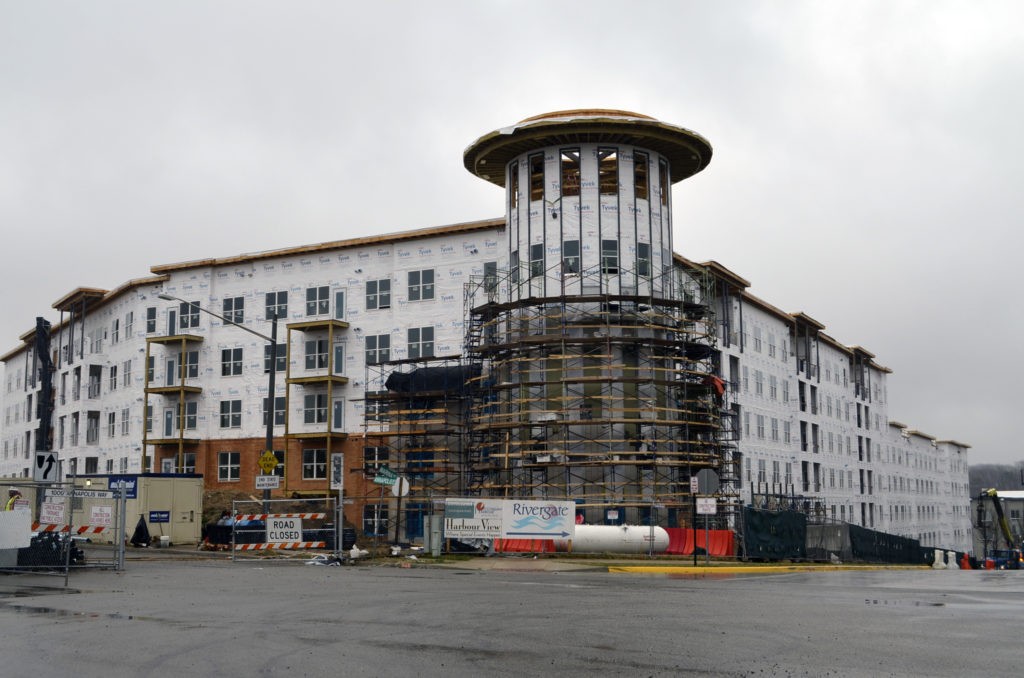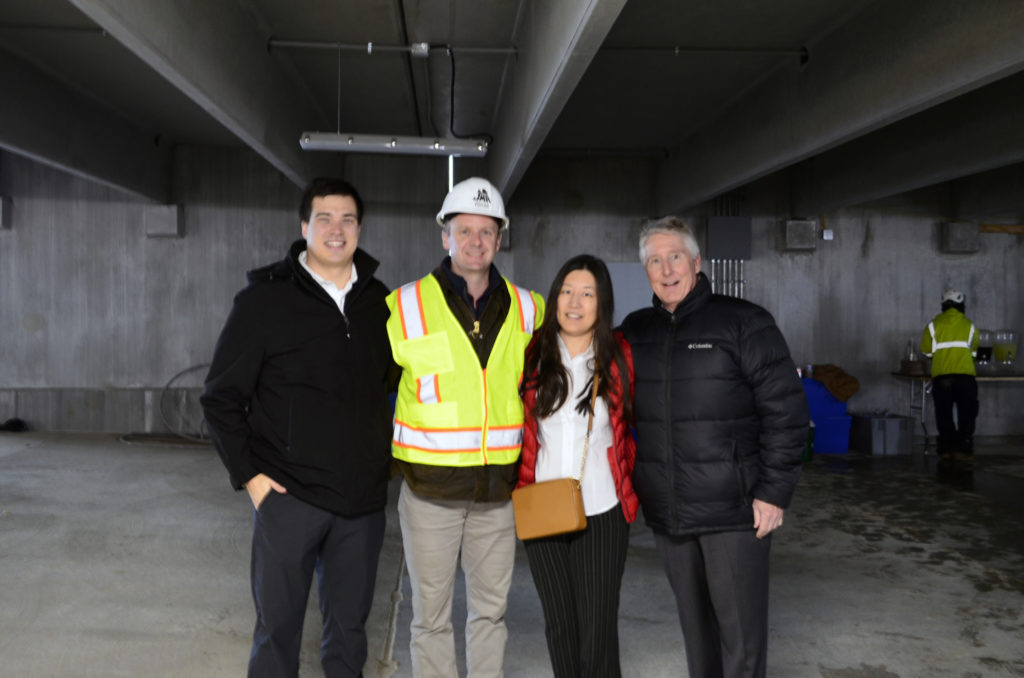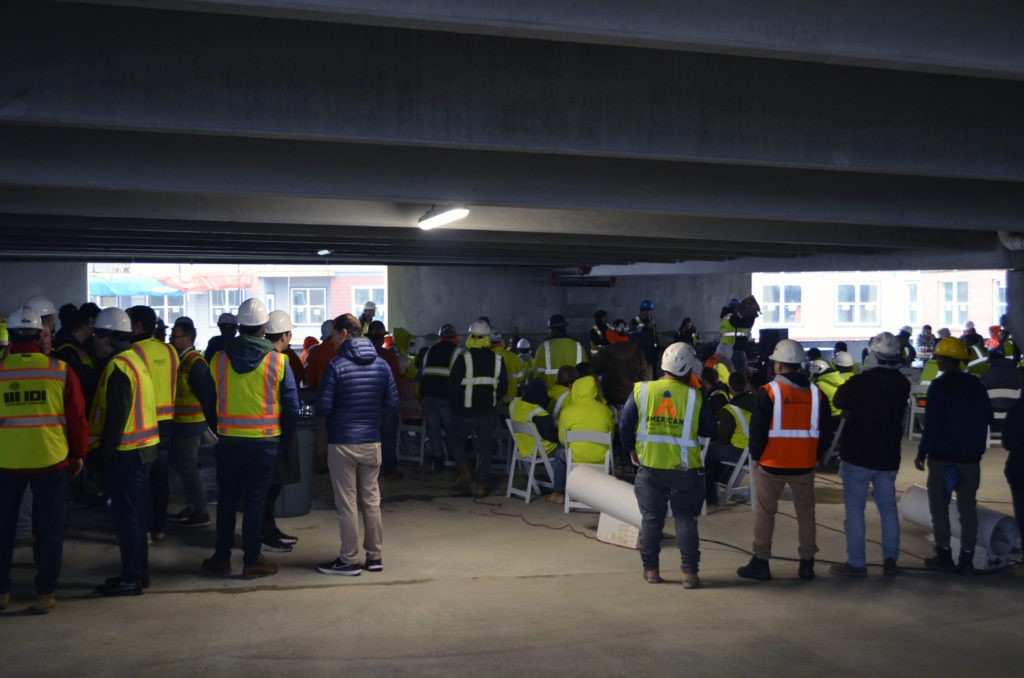The EB-5 Regional Center Program is Reauthorized – What You Need to Know
EB5 Capital is pleased to report that the EB-5 Regional Center Program (“Program”) was reauthorized by Congress on March 10, 2022! The EB-5 Reform and Integrity Act of 2022 was successfully attached to the fiscal year 2022 omnibus spending bill. For a general overview of the EB-5 Reform and Integrity Act of 2022 (“EB-5 Reform Bill”), please refer to our Q&A blog post below. Please note that this post is not a comprehensive analysis of the full text and should not be relied on for making any investment decisions.
How do the new rules affect past investors whose petitions were held in abeyance by the USCIS since June 30, 2021?
Past investors’ petitions should now be processed by the USCIS. The new Program requirements only apply to new I-526 petitions.
How long has the Program been extended?
The Program has been extended through September 30, 2027. This is the first longer-term reauthorization of the Program after many years of short-term reauthorizations.
If the Program expires again, does the new legislation protect incoming investors who join the Program while it is still active?
Yes, the Program includes language to protect all investors who file petitions on or before September 30, 2026, which is one year before the next Program expiration date, should the program expire on September 30, 2027.
When do these new rules go into effect?
Most sections in the act will take effect immediately. The Regional Center Program reauthorization and related measures will become effective 60 days after enactment.
Will investors be able to file new petitions immediately?
Investors associated with a Regional Center should wait 60 days to file for an existing project. I-924 project exemplars must also be filed prior to any I-526 petitions in a project. New filings must comply with the new TEA definition, the new investment levels, and the new source of fund rules. Investors should contact their immigration attorneys for further details on the necessary timeframe to prepare their applications.
What is the new minimum investment amount for a project located in a Targeted Employment Area (TEA)?
The new minimum investment amount for a project located in a TEA is $800,000. This amount will remain constant for the next five years. Beginning on January 1, 2027, and every five years thereafter, the investment amount will adjust based on a formula using the Consumer Price Index (CPI).
What are the new TEA requirements?
Under the EB-5 Reform Bill, TEAs will be determined by the Department of Homeland Security (DHS). TEA designations are active for two years and can be renewed for successive two-year periods. To qualify as a TEA, the average unemployment rate for the census tract(s) in which the project is located and any contiguous census tracts must be 150% of the national average. Rural areas continue to qualify as TEAs. Infrastructure projects may also qualify as TEAs if they meet certain criteria.
Does the new legislation provide more transparency and better measures to protect investors from fraud?
Yes, the new legislation includes measures to improve compliance with securities regulations; more transparency for investors; added oversight of projects and investor funds through mandatory site visits, audits, and fund administration; and tighter regulations on who may participate in the ownership and/or management of a regional center, NCE, or an affiliated JCE.
Since redeployment has occurred more often in recent years, are there any changes to how investors’ funds may be redeployed?
Yes, the rules clarify redeployment requirements and provide more flexibility as to the location of redeployment investments, thereby allowing the NCE to source the most appropriate redeployment options for its investors without regard for geographic location within the United States.
What capital needs to be documented as part of the source of funds process?
The requirements for source of funds now apply not only to the capital investment but also to any administrative fees or other fees – such as USCIS filing fees – associated with the investment. Investors should consult with immigration counsel on this process.
The EB-5 Regional Center Program Has Been Reauthorized by Congress!
EB5 Capital is pleased to report that the EB-5 Regional Center Program (“Program”) was reauthorized by Congress on March 10, 2022! The EB-5 Reform and Integrity Act of 2022 was successfully attached to the fiscal year 2022 omnibus spending bill and is now headed to President Biden’s desk for his signature. For a general overview of the EB-5 Reform and Integrity Act of 2022 (“EB-5 Reform Bill”), please refer to our Q&A blog post.
EB5 Capital Joins IDI Group in Topping Off Milestone of Rivergate (JF28) Project
Today, members of the EB5 Capital team joined IDI Group Companies in Woodbridge, VA to celebrate the Topping Off of our JF28 project, Rivergate. The Topping Off celebration is a long-standing tradition to show appreciation for the construction workers by thanking them for their efforts. As we all know, the past few years have been full of hardship, ambiguity, and difficulties because of the COVID-19 global pandemic, however, we are proud to say that the project has continued to push forward. Despite the rainy weather, the event marked a momentous and memorable occasion for all of those involved. Just outside of Washington, DC, when complete, the waterfront development will offer 318 multifamily units with a full range of luxurious amenities.

This Hotel Suite Is Built Around Its Own Massive Indoor Pool — in the Middle of Downtown L.A.
“The hands-down coolest hotel suite in Los Angeles right now can be found at the Kelly Wearstler–designed Downtown L.A. Proper Hotel.”

USCIS Files Motion to Withdraw Appeal
USCIS MOVES TO DISMISS ITS OWN APPEAL IN THE BEHRING REGIONAL CENTER LAWSUIT
What is the Behring Regional Center LLC v. Chad Wolf, et al. lawsuit?
Behring Regional Center filed suit against USCIS seeking to have the 2019 EB-5 Immigrant Investor Program Modernization Rule (“Modernization Rule”) invalidated on numerous grounds, including violations of the Federal Vacancies Reform Act (“Vacancies Act”). On June 22, 2021, a California judge ruled in favor of Behring Regional Center finding that the former acting Department of Homeland Security Secretary, Kevin McAleenan, was not properly serving in his position under the Vacancies Act when he effectuated the Modernization Rule, which raised the EB-5 investment from $500,000 to $900,000. Two months later, on August 23, 2021, USCIS filed a Notice of Appeal to challenge the California District Court’s decision that vacated the Modernization Rule on June 22, 2021.
Why did USCIS decide to dismiss its appeal?
There is no certainty as to why the motion was filed, but we can assume that the Biden Administration does not want to spend its resources defending Regulations passed under the previous Trump Administration. On the other hand, the Biden Administration might intend to run its own Regulatory process in the future. At this point in time, it would not be wise to speculate on the reasons for the withdrawal. Nevertheless, this positive news brings a sense of temporary relief to the EB-5 industry.
How will the dismissal affect investors and Regional Centers?
The finality of the California District Court’s decision means that the $900,000 investment level effectuated through the Modernization Rule was invalid all along. Investors who filed with $500,000 after the District Court’s decision no longer need to be concerned that additional funds will be required of them. We anticipate investors who filed at the $900,000 investment level may seek a return of $400,000. Whether they are entitled to such a reduction in their capital contribution will depend on the offering documents they signed and/or whether the Regional Center can find new investors to replace any refunds of committed capital.
Downtown Los Angeles Proper Hotel Featured in Architectural Digest

“It is filled with this aura of Old Hollywood, and it was our job to bring this landmark into the modern age,” says AD100 Hall of Fame designer Kelly Wearstler of her latest project: reimagining and recasting a circa-1926 California Renaissance Revival building by architects Curlett & Beelman in Los Angeles’s South Park District into the Downtown L.A. Proper Hotel. It was originally a swank private club, with Cecil B. DeMille as a member; then, around the 1960s, it became a YWCA, some vestiges of which Wearstler fashioned into novel suites.
Recent Webinars on Reauthorization
EB5 Capital hosted six webinars in four languages that focused on the reauthorization of the EB-5 Regional Center Program. When the Program lapsed on June 30, 2021, all pending I-526 petitions and I-485 petitions were put on hold by the USCIS. Investors who have yet to complete their consular processing with the National Visa Center were also held in abeyance. This blog post contains selective questions from these six webinars, answers to these questions by EB5 Capital’s President, Brian Ostar, and a revised update on the status of the Program.
We will be hosting additional webinars in the near future
How have investors with petitions on hold been impacted since the Program’s expiration?
So far, investors have lost five months of processing time. Since the Program is not likely to be reauthorized until December or early next year, investors may lose a total of six to eight months of time. The USCIS posted on its website recently that it will keep petitions on hold until at least the end of the calendar year until there is new guidance. This recent notice on the USCIS’ website is a reminder to Congress that, if the Program’s reauthorization is not resolved soon, the agency may feel compelled to start denying petitions. If this occurs, it will be politically problematic for Congress.
Are investors still able to file Form I-765 and Form I-131 with an expired Program?
Yes, these forms can still be filed if the individual has a pending I-485 application for adjustment of status. Form I-765 is filed to request an Employment Authorization Document (EAD). Form I-131 is filed to request a travel document, such as advanced parole. Both forms are typically filed concurrently with the I-485 application for adjustment of status. The USCIS has confirmed that it will continue to accept and adjudicate Forms I-765 and I-131 relating to pending I-485 applications to adjust the status based on an approved I-526 petition. We recommend consulting with your immigration attorney prior to any international travel or filing immigration applications.
What legal action can be taken if an investor is left waiting for an unreasonable length of time for the USCIS to adjudicate his/her petition? What is considered unreasonable and what can investors do?
There are a few options. The first thing an investor can do, if the USCIS denies a case due to the sunset, is file a lawsuit. I [Brian Ostar] don’t think this will happen because reauthorization or grandfathering language will likely come first. However, if there is a denial, there will almost certainly be a lawsuit. If an investor sues the USCIS, then all other denials will likely be put on hold, and the investor who sued will likely win. Second, once the Program is reauthorized, if the processing time is above the national average posted on the USCIS’ website, then investors may be able to file a “mandamus” lawsuit seeking a court order forcing the USCIS to adjudicate swiftly. This is another important question to confer with your immigration attorney.
What is the incentive for the USCIS to legacy in existing investors?
The incentive is for the United States to honor its commitments. If the USCIS does not follow through with its commitment to processing visas after investors have satisfied the Program requirements, then it would damage the reputation of the EB-5 brand, and more generally the image of the United States. EB-5 investors come from all around the world, and there is a vast range of petitioners – some are very connected in political circles. Tens and thousands of investors are already in the queue, and it would be a legal and political nightmare for the USCIS if investors were not made legacies.
How does the Program’s expiration impact the return on capital for investors?
It doesn’t. The offering documents remain the same. The return of capital can only occur after two events have been satisfied: the completion of the investor’s Lawful Permanent Resident (LPR) period, along with the timely filing of their Form I-829 petition, and a capital event in the project. If reauthorization continues to lag, then the probability of redeployment increases, but the terms of the redeployment remain the same, consistent with the offering documents.
What impact does this expiration have on other parties outside of EB-5 investors?
I do not think anyone is benefiting from the lapse of the Program. Certainly, cities and states have been depending on this capital for a long time. Regional Centers, immigration attorneys, and all the other EB-5 stakeholders and parties involved are not benefitting either. The United States, in general, is not benefitting.
Why didn’t EB-5 receive the unanimous vote that it needed before June 30, 2021, when the EB-5 Reform and Integrity Act (S.831) was introduced?
Though Senator Lindsey Graham (R-SC) has been one of the most prominent supporters of EB-5, he objected to S.831 because it only addressed integrity measures. He would rather pass a broader package that focuses on a dozen different core issues. Although the entire industry agrees that there is a need for integrity measures, many stakeholders did not want to handle the legislation piecemeal. They wanted comprehensive EB-5 legislation covering many issues, not specifically related to integrity. For instance, S.831 did not address the investment amount, the short-term nature of the Program, visa availability, processing times, redeployment, and other issues.
Why didn’t the Program get reauthorized on September 30, 2021, when there was an opportunity for it to get reattached to the Continuing Resolution? Was there any legislation being discussed during the weeks leading up to September 30, 2021, or was it just an opportunity for a clean extension with the Continuing Resolution?
After June 30, 2021, the industry realized that we needed a more comprehensive package. That package was not ready for consideration by September 30, 2021. Plus, Congress had many other important priorities to consider such as the infrastructure bill, the raising of the debt ceiling, and the U.S. withdrawal from Afghanistan.
What is likely to happen next with the Program? What if EB-5 is not reauthorized before the end of the year? What is the new realistic timeline that people can expect for the USCIS to start adjudicating petitions?
Currently, there is comprehensive draft legislation being considered by congressional members and industry stakeholders, and these negotiations on Capitol Hill are making progress. We are finally seeing a level of compromise that we have been trying to obtain for several years and consensus is growing around key terms. After legislation is finalized, it needs to be attached to a vehicle like the 2022 fiscal appropriations. It is possible that by December 3, 2021, the government will extend the Continuing Resolution for two additional weeks, or even until Q1 2022.
The legislation includes protection for investors who filed prior to the Program’s expiration. If this legislation does not pass in December, there is a possibility that the executive branch could direct the USCIS to adjudicate petitions – or to, at least, continue to keep them on hold. Another option involves the courts. If an investor is denied and there is a lawsuit, then a court could overturn that decision and force the USCIS to start adjudicating petitions. So, there are multiple ways to protect investors.
What is your advice to people right now while we are in this limbo period?
Be patient. We are doing everything we can to move things along. The industry has banded together — IIUSA, EB5-IC, AIIA, AILA, the Rural Alliance, other influential Regional Centers, highly respected immigration law firms and lawyers, and others. Everyone is working on reauthorization around the clock, and there is not much a single investor can do except be patient and stay informed.
The EB-5 Program expired on June 30, 2021. There can be no assurance that the EB-5 Program will be reauthorized, or that applications submitted before the EB-5 Program’s June 30, 2021, expiration will be adjudicated by the USCIS if the EB-5 Program is not reauthorized. Therefore, a Limited Partner who has not obtained conditional permanent residence before the law’s June 30, 2021 expiration runs a risk of the loss of the opportunity for immigration status through the investment. Consequently, no assurance can be given that any Limited Partner will obtain approval of his or her particular immigration petition for conditional or permanent resident status by participating in a Redeployment into an Alternative Investment as a Limited Partner. This blog is provided to you for informational purposes only and is not intended as legal advice. You should consult with your own immigration counsel or advisor regarding the impact of the current program lapse on your EB-5 immigration process.
EB5 Capital Celebrates the Opening of Downtown Los Angeles Proper Hotel
WASHINGTON, Oct. 18, 2021 (GLOBE NEWSWIRE) — EB5 Capital joins The Kor Group in celebrating the grand opening of the Downtown LA Proper Hotel in Los Angeles, California. Downtown LA Proper is a 13-story, 148-room luxury lifestyle hotel in the heart of Downtown LA. The property showcases the vision of internationally acclaimed designer Kelly Wearstler, who blends modern influences with vintage elements, referencing the site’s history. The property was initially a private club in the 1920s frequented by members of Hollywood.

“We are very excited to celebrate the opening of the Downtown LA Proper,” said Patrick Rainey, EB5 Capital Senior Vice President of Investments. “Since our initial introduction to the project, we have been excited about what the Proper brand will offer to such an exciting and growing market in Downtown Los Angeles.”
The property features three distinct food and beverage spaces operating in partnership with James Beard Foundation award winners Suzanne Goin and Caroline Styne of The Lucques Group. In addition, there are 14,000 square feet of meeting space and a rooftop pool with unobstructed panoramic views of the city. Downtown LA Proper will be managed by Proper Hospitality, which was named “Hotelier of the Year” in 2020 by Hospitality Design. Proper Hospitality has an award-winning portfolio of luxury lifestyle hotels and residences that offer unique design, world-class amenities, original food and beverage collaborations, and diverse cultural programming.

EB5 Capital invested more than $65 million in this project. “The opening of Proper Hotel is an important milestone to our investors,” said Nhat Phuong Huynh, EB5 Capital’s Vice President of Investor Relations. “Our investors – all of whom are foreign – come from ten different nationalities, and they have all been anticipating this hotel opening since they first invested with us.”
LA-based real estate developer, The Kor Group, has developed Proper Hotels in three other locations, including San Francisco, Santa Monica, and Austin (Hotel and Residences). New developments are in the works for Miami and Portland.
225 North Calvert Project Receives Repayment
WASHINGTON, Sept. 10, 2021 (GLOBE NEWSWIRE) — EB5 Capital announced today its $20 million preferred equity investment in CP Capital US’s (formerly known as HQ Capital Real Estate) 225 North Calvert has been repaid in full.
225 North Calvert, located in Baltimore, Maryland, is a mixed-use redevelopment of a downtown office building into a 347-unit luxury apartment building with ground-floor retail. Construction began in late 2016 and was completed in November of 2018. The amenities offered by 225 North Calvert are upscale and designed to attract young professionals. Its 9,500 square feet of ground-floor retail space adds to the exciting atmosphere of the area as downtown Baltimore continues growing into an attractive destination for living, dining, and entertaining.
10 Questions to Ask EB-5 Regional Centers
While EB5 Capital’s project selection and due diligence have always been rigorous, it is even more important now due to the pandemic and the uncertain global economy. Before selecting an EB-5 project, prospective investors should thoroughly review the performance and background of the EB-5 Regional Centers sponsors they are considering. The EB-5 Regional Centers sponsoring the EB-5 investment are just as, or perhaps more important than, the project itself. We prepared a list of common questions to help prospective investors with their due diligence process.
EB-5 is a highly specialized, niche business. How long have you been in business? What year did you receive your first EB-5 Regional Centers license? Has there been any SEC action or enforcement against you?
Generally, the longer a company has been around, the more likely it has successfully weathered the challenges of the industry. Since the EB-5 industry is constantly evolving and can be volatile at times, an RC’s longevity should signal to prospective investors traits of stability and success. Although the EB-5 Program was rolled out approximately 30 years ago, the Program became better known after the global financial crisis in 2008 when projects needed new sources of capital. RCs that have been in operation since at least 2008 are counted as pioneers in this specialized industry. A deep Google search should tell you a lot about an RC’s track record and is a good place to start.
How many projects have you completed since you were established?
The number of EB-5 deals an RC has completed is paramount. If an RC has successfully completed 20+ projects, then it clearly knows what it’s doing. An RC may have 1,000+ investors, but only three or four completed projects, which likely isn’t enough experience to give investors comfort. Projects, especially real estate projects, can be complicated, and repetition usually brings success.
How many projects have received I-526 approvals? What about I-829 approvals? How many projects have been repaid?
These are the three questions to ask exactly in this way. By simply asking, “What is your track record?” any RC can claim that it has a 100% project-approval rate… but the more precise question is across how many deals? The true test of an RC’s track record is whether they have led investors through the full immigration and investment cycle. Are you more comfortable investing your money with an RC that has only reached the I-526 or I-829 stage, or are you more comfortable knowing that the RC you will select has finished the full cycle (i.e., issuance of permanent green card and repayment of funds) across a variety of projects?
In addition to securing a Permanent Green Card for my family, receiving our full capital back is especially important. Please tell me about the security of my capital. Have all your projects been repaid within the investment term?
In addition to asking how many EB-5 projects have been repaid, find out whether these repayments have been executed on time. A typical investment term in EB-5 usually lasts anywhere between five to eight years. Has the RC always repaid their clients within this timeframe, or have they delayed their repayments because their projects may have defaulted? If they defaulted on their projects, ask questions about the underlying reasons for the default.
I’ve heard about redeployment, but don’t quite understand it. What is redeployment and what is your redeployment strategy?
In 2014, the EB-5 industry started noticing early indications of a potential visa backlog (the 10,000-visa allocation for the EB-5 category had previously been sufficient since the Program’s establishment in 1990). Per USCIS policy, every EB-5 investor is required to maintain their funds “at-risk” through the completion of their two-year conditional residence period (or sustainment period). Redeployment is necessary to maintain the funds “at risk,” if an EB-5 investment is repaid before an investor completes their respective sustainment period. In other words, if a project is completed and repaid before an investor applies for a permanent green card, then investors need to re-invest (redeploy) their funds. As the visa backlog was becoming more severe, several RCs started preparing their strategies for future redeployment. Today, redeployment is quite common, especially given the lengthy USCIS processing times. We strongly encourage prospective investors to understand the RC’s redeployment plan and redeployment experience.
How geographically diverse is your investor pool?
It is a good sign that the RC has attracted capital from all around the world. For example, if a Brazilian, Greek, and Korean investor all invest with the same RC, this means that the investment has universal value and appeal. It also means that RC’s network of investors is vast. On the other hand, if the pool of investors hails only from one geographic area, the risk rises if the regional market dries up (like we’ve seen before in this industry). An RC with a diversified investor pool will be able to continue to attract funds from other parts of the world.
This likely will be a 5 to 8-year relationship (depending on my country of birth). I want to make sure I am partnering with a strong, reliable group. Please tell me about your team. How large is it? What kind of relevant experience does your team have?
Ask yourself if the RC can give you quality attention or if the RC staff is just a handful of people. Ask how many people work on EB-5 and how much experience do they have in servicing EB-5 requirements. Some companies may appear to be very large, but their actual EB-5 department is small and their experience may be rather thin. Do the biographies of the team members that will be supporting you reflect the breadth and depth of experience you need? Do their academic backgrounds and prior work experience add up and reveal the type of support you need?
What is the background of your CEO and President? Who is part of the senior leadership team?
Does the CEO or President of the RC have a unique story on how they entered the industry? What types of leadership positions do members of the management team hold? Are these positions exclusive to the EB-5 industry or do they branch out beyond?
EB-5 is a one-time investment for me. I want to make sure I am taken care of throughout the process. Please tell me about the services you provide once I become an investor.
Find out ahead of time what type of support you will receive from the RC and how often you will be communicating with your dedicated contact(s). Ask if there are there any additional perks that you might be offered after you sign up as an investor. Make sure you are clear on expectations upfront.
Are you able to connect me with a past investor?
Before committing any large sum of money, speak to a few past investors that have invested with the RC you are considering. When you talk to another investor, is the person sharing detailed information or just giving you a broad brush? The more detailed information they can give you, the better. Do they have good things to say about their experience? Do they have any advice for you?
Thorough due diligence is the key to success. Our goal is for you to secure your permanent residency and the return on your initial capital investment. We wish all investors the best of luck on their immigration and investment journey, and we hope you will allow us to guide the way!








